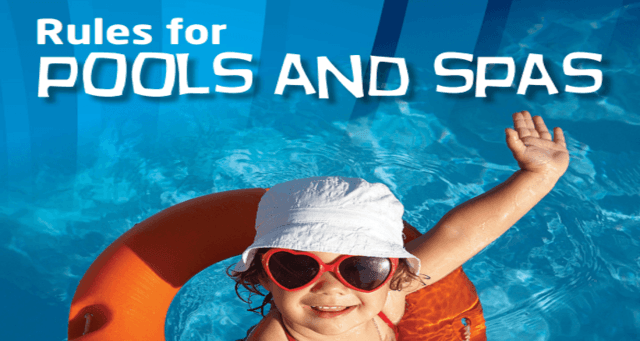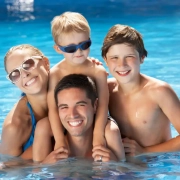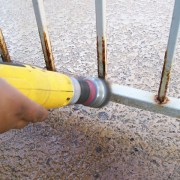Essential Pool Safety Tips for Residential Pools and Spas
Owning a pool or spa is a wonderful luxury, providing a fun and relaxing way to enjoy your home. However, with great enjoyment comes great responsibility. Ensuring that your pool or spa is safe for everyone – from young children to adults – is crucial for preventing accidents and injuries. Here are some essential pool safety tips for residential pools and spas.
- Install Proper Fencing and Barriers
One of the most important safety features for a residential pool is a strong, secure fence or barrier. The fence should be at least 4 feet high, have no footholds or handholds, and be designed to prevent children from easily climbing over or squeezing through. Gates should be self-closing and self-latching, with the latch positioned high enough to be out of reach of young children.
A barrier around your spa is also a must, as children can easily access it without supervision. In some areas, local regulations may require specific fencing standards, so always check your local laws.
- Supervise at All Times
Active supervision is key to ensuring pool safety, especially for children. Designate a responsible adult to be the “water watcher” whenever people are in the pool or spa. Never leave children unattended, even for a moment. It’s easy for an emergency to arise in just seconds, so staying within arm’s reach of young swimmers is essential.
Avoid distractions like texting or chatting while supervising. If you’re hosting a pool party, designate multiple adults to supervise to ensure there is always someone paying full attention.
- Use Pool Alarms and Covers
Installing pool alarms can provide an extra layer of safety, alerting you if anyone or anything falls into the pool. Alarms can be placed on gates, doors, or even in the water to detect movement. Pool covers, particularly automatic covers, are also effective at preventing access when the pool is not in use.
Make sure that any cover is designed to support weight and prevent accidental drowning, as some covers may not be suitable for preventing young children from accessing the pool.
- Teach Children Water Safety Skills
Teaching children how to swim is one of the best safety precautions you can take. Water safety education should begin as early as possible. Many swimming schools offer lessons for babies and toddlers, focusing on water safety and basic swimming skills. As children grow, continue to reinforce water safety rules, such as no running by the pool and never swimming alone.
Additionally, familiarize your children with the pool’s rules, including how to exit the pool safely and recognizing when they’re in trouble in the water.
- Keep Rescue Equipment Nearby
Ensure that essential rescue equipment is always close at hand. This includes a reaching pole (a long pole or shepherd’s hook), life rings, a first aid kit, and a flotation device that is appropriate for each user. Make sure all family members and guests know where the rescue equipment is located and how to use it in an emergency.
- Maintain Proper Pool Chemistry
Safe water quality is critical to both health and safety. Improperly maintained pool water can lead to accidents, illnesses, and skin or eye irritation. Regularly test and balance the water’s pH, chlorine levels, and alkalinity. Follow the guidelines for chemical maintenance, and use quality testing equipment to make sure the water is safe for swimmers.
A clean, well-maintained pool also reduces the risk of slipping on algae or debris, which can lead to accidents around the pool area.
- Install Pool Lighting
Good lighting is essential for pool safety, especially if the pool is used in the evening. Ensure the pool area is well-lit so that swimmers, as well as those supervising them, can see potential hazards. This includes lighting around the pool, as well as on any steps or ladders.
Additionally, lighting is important if you need to respond quickly in an emergency situation, making it easier to see and act.
- Set Clear Pool Rules
Establishing clear and consistent rules for pool use is essential for keeping everyone safe. Some common rules might include:
- No running or pushing near the pool.
- Always swim with a buddy.
- No diving in shallow areas.
- Never swim after consuming alcohol.
- Do not enter the pool if there is a thunderstorm.
Ensure that guests are aware of these rules before they use the pool, and be firm about enforcing them.
- Stay Prepared for Emergencies
Accidents can happen, even with the best precautions in place. Knowing how to respond in an emergency is critical. Make sure everyone in your household knows CPR and basic first aid. Consider taking a formal CPR and first aid course so you’re well-prepared to handle situations that may arise.
In the event of an emergency, know how to call for help quickly and provide your address clearly so first responders can find you quickly.
- Safety for Spa Users
Spas and hot tubs require special attention. High water temperatures can be dangerous for young children, pregnant women, and anyone with heart conditions. Set the water temperature to a safe level (typically no higher than 104°F). Limit time spent in the spa to 15-20 minutes at a time to avoid overheating.
Like pools, spas should have appropriate barriers and supervision to prevent accidental entry, especially when hot water can be hazardous.
Conclusion
Owning a residential pool or spa offers many joys, but with it comes the responsibility to prioritize safety. By following these essential safety tips—installing barriers, supervising swimmers, maintaining water quality, and preparing for emergencies—you can create a safe environment for everyone to enjoy. With the right precautions in place, you can ensure that your pool or spa remains a fun, relaxing, and safe space for years to come.






